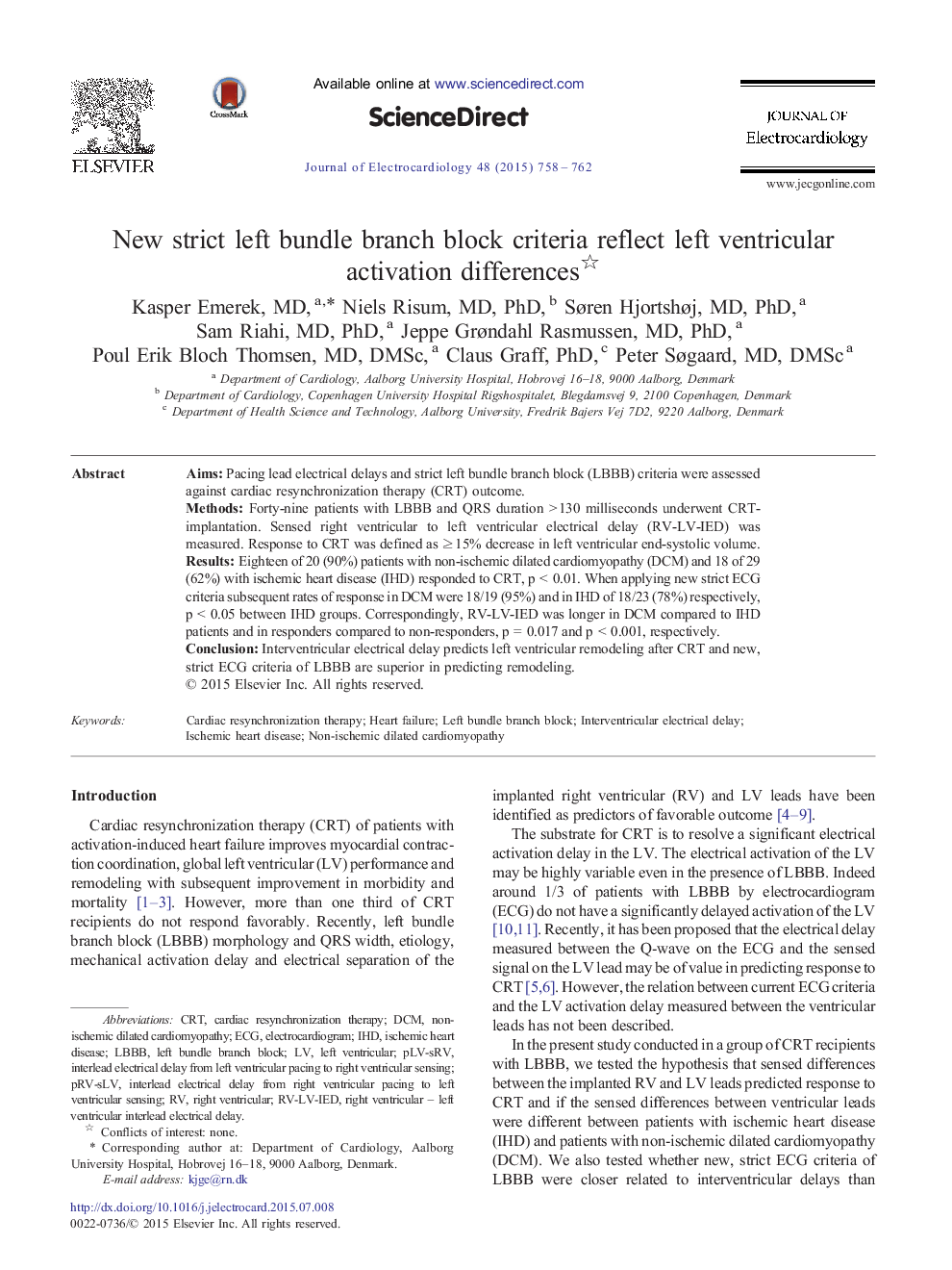| Article ID | Journal | Published Year | Pages | File Type |
|---|---|---|---|---|
| 5986332 | Journal of Electrocardiology | 2015 | 5 Pages |
â¢Interventricular electrical delay predicts cardiac remodeling after CRTâ¢New, strict ECG criteria for LBBB are better at predicting response to CRTâ¢Patients with IHD have more heterogeneous interventricular electrical delaysâ¢Patients with IHD have lower response-rates to CRT than patients with DCM
AimsPacing lead electrical delays and strict left bundle branch block (LBBB) criteria were assessed against cardiac resynchronization therapy (CRT) outcome.MethodsForty-nine patients with LBBB and QRS duration > 130 milliseconds underwent CRT-implantation. Sensed right ventricular to left ventricular electrical delay (RV-LV-IED) was measured. Response to CRT was defined as â¥Â 15% decrease in left ventricular end-systolic volume.ResultsEighteen of 20 (90%) patients with non-ischemic dilated cardiomyopathy (DCM) and 18 of 29 (62%) with ischemic heart disease (IHD) responded to CRT, p < 0.01. When applying new strict ECG criteria subsequent rates of response in DCM were 18/19 (95%) and in IHD of 18/23 (78%) respectively, p < 0.05 between IHD groups. Correspondingly, RV-LV-IED was longer in DCM compared to IHD patients and in responders compared to non-responders, p = 0.017 and p < 0.001, respectively.ConclusionInterventricular electrical delay predicts left ventricular remodeling after CRT and new, strict ECG criteria of LBBB are superior in predicting remodeling.
